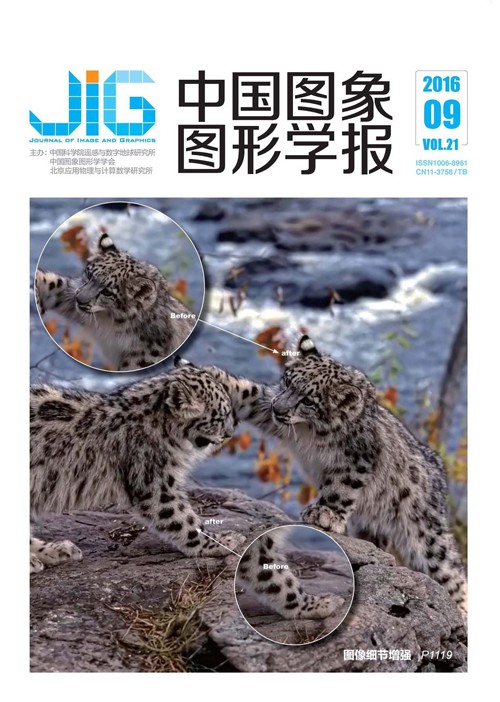
暗通道先验图像去雾的大气光校验和光晕消除
摘 要
目的 针对暗通道先验图像去雾方法中存在的大气光误判以及光晕效应等问题,提出一种基于大气光校验和光晕消除策略的改进算法。方法 首先,采用基于支持向量机的大气光校验方法对候选大气光的有效性进行判断,剔除太阳光、车灯等高光区域的干扰;然后,采用基于块偏移的精细透射率计算方法获得边缘保持的透射率,极大地抑制了无雾图像中光晕像素的数量;最后,采用基于导向滤波的光晕像素检测和校正方法进一步消除了残留的少量光晕像素。结果 本文算法有效抑制了大气光的误判现象,大大消除了光晕效应,提升了无雾图像的细节可辨认度,最终获得的无雾图像细节丰富、颜色深度感饱满。结论 本文算法在无雾图像的可见度增强等诸多方面超越了已有的方法,在视频监控、交通监管和目标识别等领域具有较大实用价值。
关键词
Dark channel prior-based image dehazing with atmospheric light validation and halo elimination
Zhao Jinwei, Shen Yiyun, Liu Chunxiao, Ouyang Yi(School of Computer Science & Information Engineering, Zhejiang Gongshang University, Hangzhou 310018, China) Abstract
Objective To address false candidate atmospheric light and halo effects in dark channel prior-based image dehazing methods, an improved image dehazing algorithm is proposed, with atmospheric light validation and halo elimination strategies, which can reveal high visibility in haze-free images. Method As dark channel prior-based methods do not verify the validity of atmospheric light and may fail to select a proper one, a support vector machine-based classifier is trained and utilized to reject the false candidate atmospheric light. The halo effect is introduced to haze free results with coarse transmission maps in dark channel prior-based approaches. Thus, a patch shift-based fine transmission estimation method is adopted, which can preserve edges in the input image and suppress halo effects in the haze-free image significantly. Several pixels may still remain with halo effects near sharp edges, which are detected and corrected by the proposed halo elimination strategy using the guided filter. Finally, the haze-free image is obtained by solving the haze image formation model. Result Experimental results demonstrate that the false candidate atmospheric light is rejected and the halo effect is diminished significantly when our algorithm is applied. The resulting haze-free images possess superior visibility, rich image details, and depth. Conclusion Our algorithm outperforms the state-of-the-art image dehazing methods and significantly improves visibility in haze-free images, which meets the requirements of applications such as video surveillance, traffic navigation, and object detection.
Keywords
|



 中国图象图形学报 │ 京ICP备05080539号-4 │ 本系统由
中国图象图形学报 │ 京ICP备05080539号-4 │ 本系统由